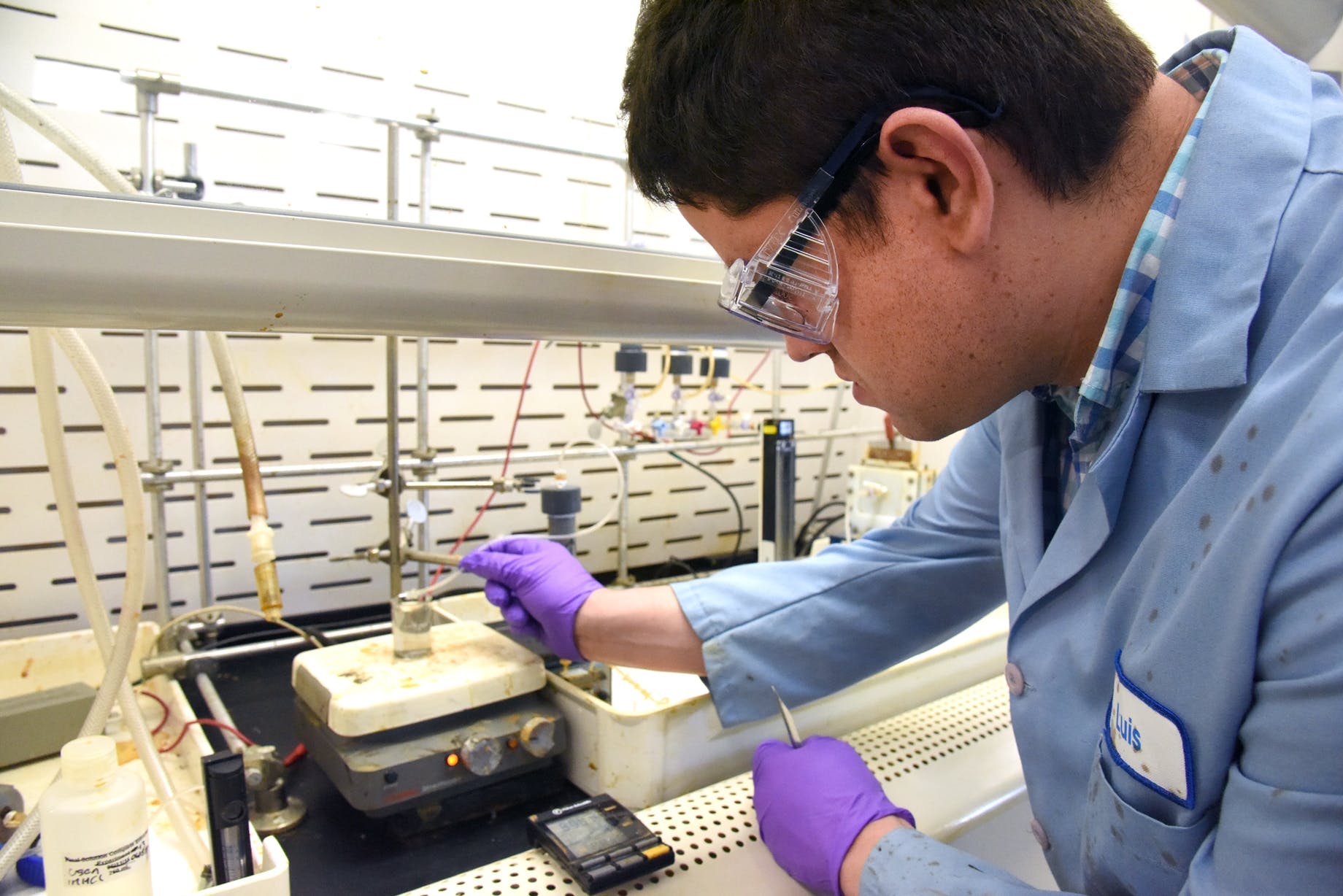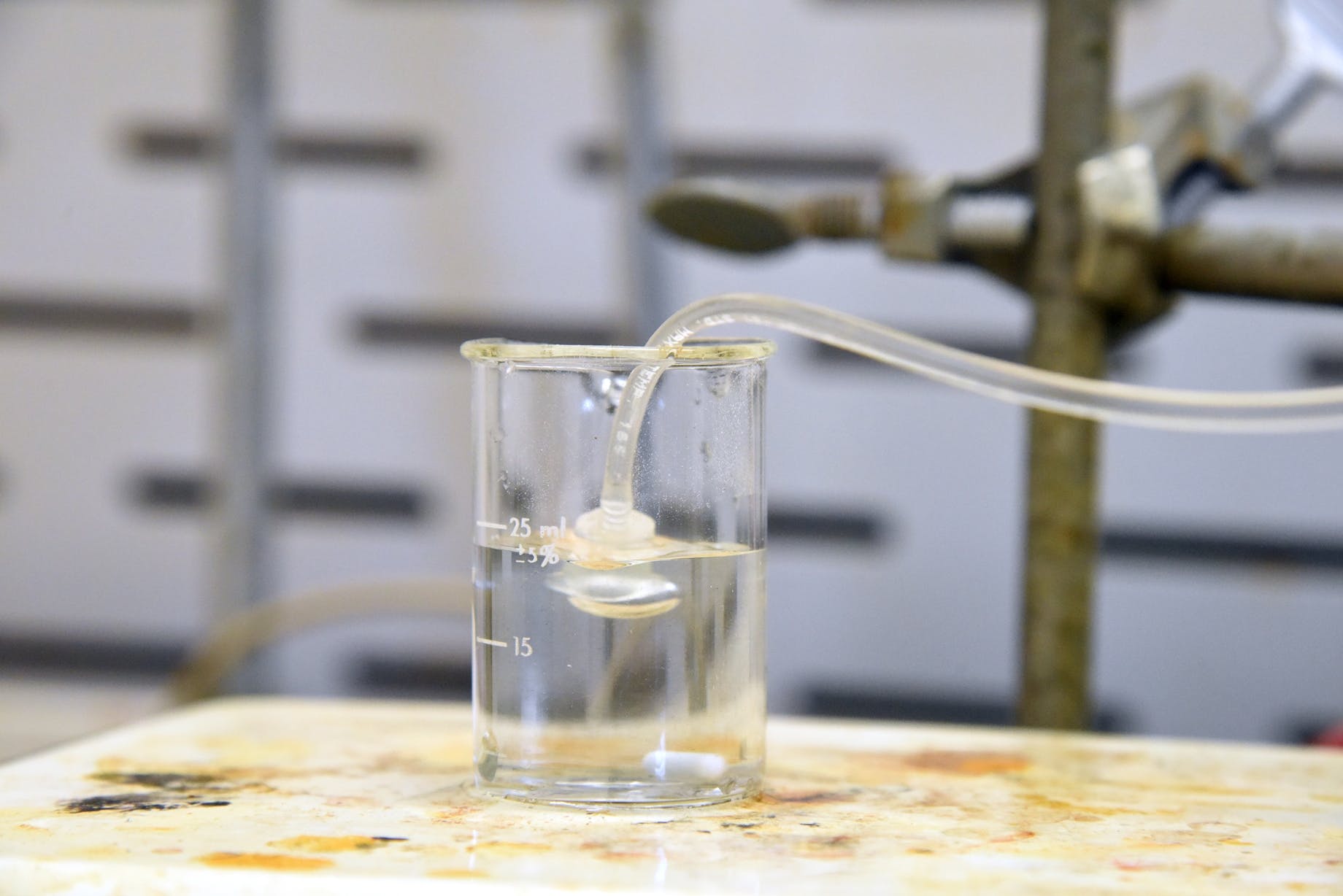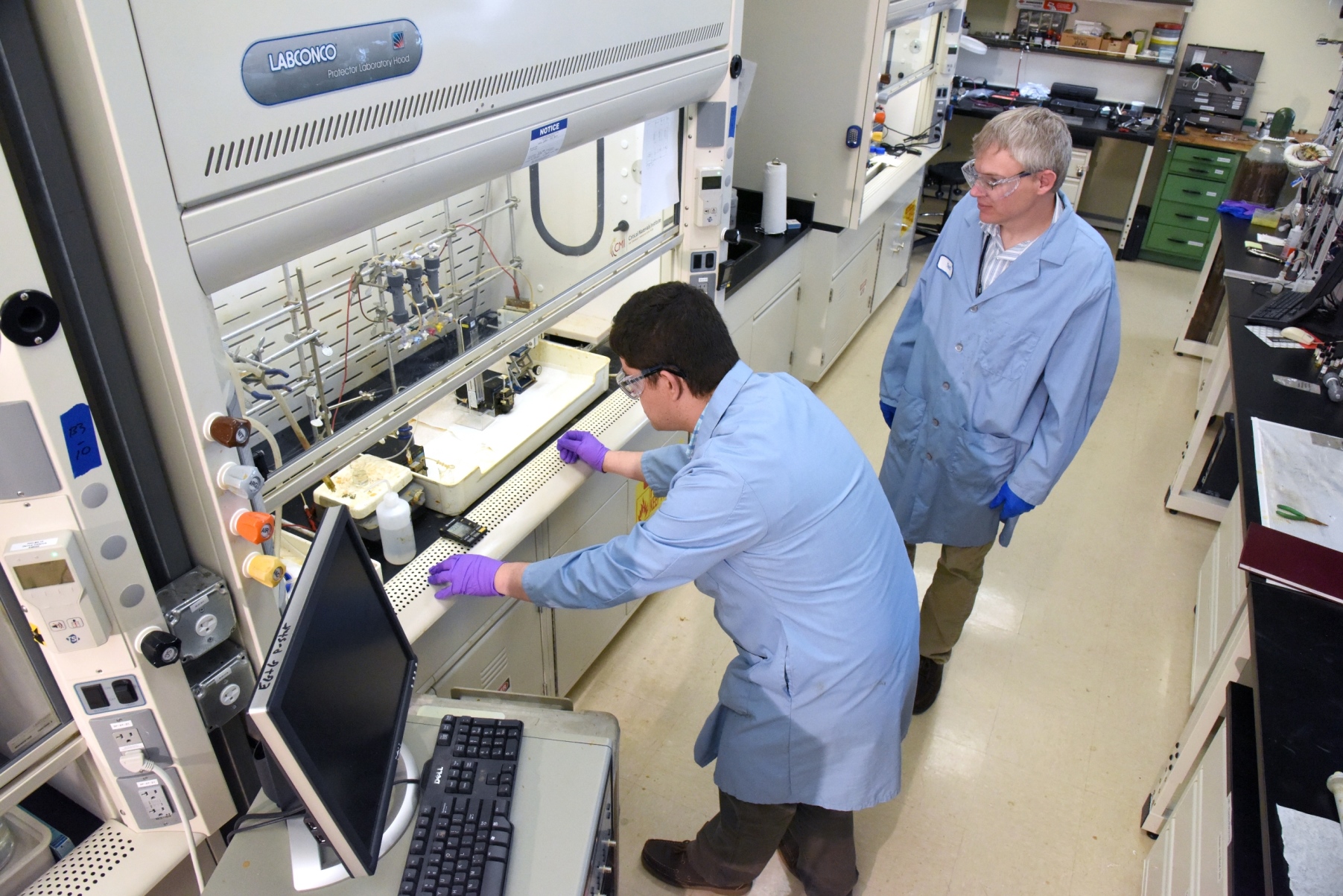People pay a lot for their iPhones and Droids, but the materials in them are probably the least expensive part.
Yes, there’s gold, silver, platinum and palladium in them, as well as tin, copper and zinc. But the total value of the metals in an individual phone is in the neighborhood of $4 to $7, said Dr. Tedd Lister, an Idaho National Laboratory scientist researching chemical processes for recycling of critical metals from used electronics.
Although this sounds like small change, consider that it has been estimated roughly 4.7 billion mobile phones will be in circulation worldwide in 2017. “Now you’re talking about a lot of gold,” said Lister.

Devices constantly change, but the metals inside them remain largely the same. Although gold mainly drives the economics of what Lister and his engineering colleague Luis Diaz-Aldana have been doing at INL’s Energy Innovation Laboratory, reclaiming base metals and rare-earth elements (REEs) adds value to the proposition. REEs are lanthanides used in LED and fluorescent lighting, electric vehicle batteries, wind turbines and solar batteries. Expensive and difficult to obtain, the limited U.S. supply is vulnerable to disruptions and price spikes.
Then there are environmental reasons. “For all the metal you can recover, it’s less you have to dig,” Lister said. The environmental harm done by sending used phones overseas to be burned or dissolved, usually in impoverished, developing nations, is something any conscientious person ought to be unwilling to accept.
Lister was focused on electrochemical recycling in 2012 when it dawned on him – metals might be recovered using the reaction he was studying. Because of the explosion in electronics manufacturing and questions concerning material supply chains, the U.S. Department of Energy’s national laboratory complex has sharpened its focus on critical materials and their recovery.

INL’s method sends 2 volts across two electrodes in a solution. Oxidizers formed at one electrode dissolve metals from the electronics as the solution is pumped through. The metals become plated at the other electrode, where they can be recovered. Unlike traditional processes used overseas, the method does not consume acid. What’s more, it continuously regenerates the initial oxidizer at the anode, which supports long-term operation without chemical consumption. “The challenge is to get all the process parameters correct,” Lister said.
The work has been funded by the Critical Materials Institute (CMI), an Energy Innovation Hub led by the Department of Energy’s Ames Laboratory and supported by the DOE Office of Energy Efficiency and Renewable Energy’s Advanced Manufacturing Office. CMI seeks ways to eliminate and reduce reliance on rare-earth metals and other materials critical to the success of clean energy technologies.
While there are still big questions about electrochemical reprocessing and how to scale it up, Lister and Diaz-Aldana’s work has gotten lots of attention this year. The technology was selected for a 2016 TechConnect National Innovation Award. These are given to early-stage innovations worldwide through industry review of the top 15 percent of technologies submitted to the annual TechConnect National Innovation Summit.

Then in August, Lister and Diaz-Aldana were selected as recipients of a Federal Laboratory Consortium Far West Region award for the technology, which has been dubbed Electrochemical Recycling Electronic Constituents of Value (E-RECOV). In September, it was named an Idaho Innovation Award finalist for Early-Stage Innovation of the Year. And now a Small Business Voucher (SBV) pilot from DOE will help the team collaborate with e-Materials Recovery, LLC, based in Austintown, Ohio.
The problem all along has been one of logistics. “Recycling technology is costly and needs development before full market deployment is possible,” Lister wrote in a paper on urban mining and recycling. “Consumer products are difficult to dismantle, and individual element separation is often a challenge.”
e-Materials Recovery has developed a technology that processes printed circuit boards without producing the toxic fumes associated with more widely used smelting processes. The technology produces a “char” from which Lister and Diaz-Aldana will attempt to recover metals. In addition to metals recovery, e-Materials Recovery proposes to convert all plastics in the material into syngas that can be burned to generate electricity.

“The integration of the two technologies solves technical challenges that each faces in recovery from electronic materials,” says the e-Materials Recovery Statement of Work.
The SBV pilot entails a four-phase demonstration project to determine the viability of linking the two processes. e-Materials Recovery will contribute cost-sharing for materials and labor.
The final portion of the SBV pilot work, scheduled to end in mid-2017, will use the experimental data to develop an integrated process and economic models. This will mean assessing the processes based on percentage of precious metal recovery, feedstock cost, precious metal grade and plant size. The models will describe return on investment and cumulative cash flow for a demonstration-scale facility.
“We don’t fully know the economics,” Lister said. “That’s what we need to know before e-Materials Recovery makes any decision to scale up.”







